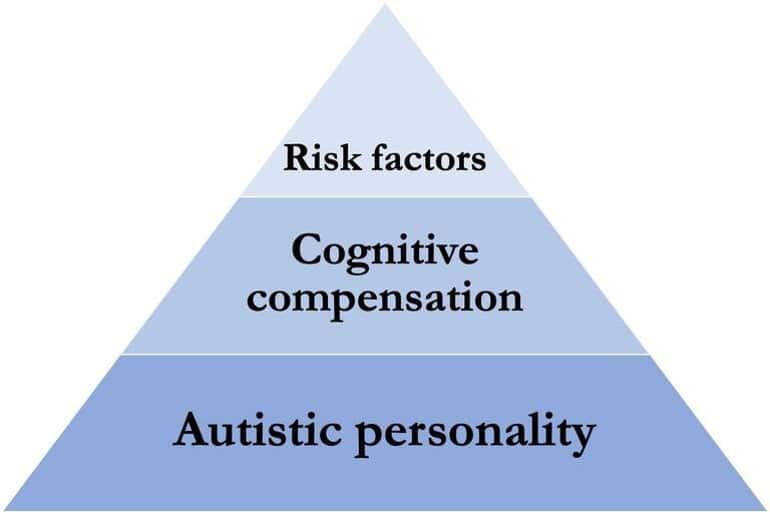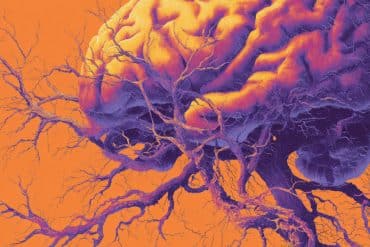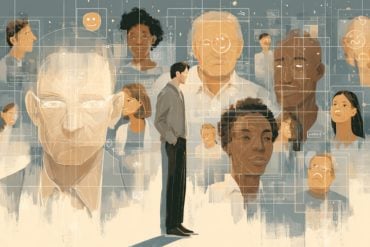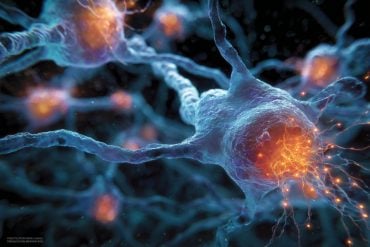Summary: A new model of autism development gives insights into how various risk factors give rise to ASD symptoms and why there is such great variability between individuals.
Source: University of Gothenburg
The development of autism may now become easier to understand, thanks to an explanatory model presented in a thesis from University of Gothenburg. This model provides new insights into how various risk factors give rise to autism and why there is such great variability between individuals.
Autism, a neurodevelopmental condition, affects how people perceive the world around them and how they interact and communicate with others. Among individuals with autism, there are major differences in terms of personal traits and manifestations alike. The disorder is therefore usually described as a spectrum, with numerous subtle variations.
The new explanatory model is theoretical but simultaneously practical in application, since its various components are measurable through, for example, questionnaires, genetic mapping, and psychological tests. The model describes various contributing factors and how they combine to prompt an autism diagnosis and cause other neurodevelopmental conditions.
Three contributing factors
The model links three contributing factors. Together, these result in a pattern of behavior that meets the criteria for an autism diagnosis:
- Autistic personality—hereditary common genetic variants that give rise to an autistic personality.
- Cognitive compensation—intelligence and executive functions, such as the capacity to learn, understand others, and adapt to social interactions.
- Exposure to risk factors—for example, harmful genetic variants, infections, and other random events during gestation and early childhood that adversely affect cognitive ability.
“The autistic personality is associated with both strengths and difficulties in cognition but does not, as such, mean that diagnostic criteria are fulfilled. Still, exposure to risk factors that inhibit people’s cognitive ability may affect their capacity to tackle difficulties, which contributes to individuals being diagnosed with autism,” says Darko Sarovic, physician and postdoctoral researcher at Sahlgrenska Academy, University of Gothenburg, who wrote the thesis.
The model makes it clear that it is the many different risk factors combined that bring about the major differences among individuals on the spectrum. The various components of the model are supported by results from previous research.
Adaptive ability
High executive functioning skills may enable people to compensate for their impairment in such a way as to mitigate the symptoms, which reduces their risk of meeting the diagnostic criteria for autism. This may explain why, at group level, researchers observe a lower degree of intelligence among people diagnosed with autism, as well as other neurodevelopmental conditions.

It also affords an understanding of why intellectual disability is more common among these groups. Thus, the model indicates that low cognitive ability is not part of the autistic personality but, rather, a risk factor that leads to diagnostic criteria being met.
“The autistic personality is associated with various strengths. For example, parents of children with autism are overrepresented among engineers and mathematicians. The parents themselves have probably been able to compensate for their own autistic personality traits and thus not met the criteria for an autism diagnosis.
“The impact of the disorder has then become more noticeable in their children owing, for instance, to an exposure to risk factors and relatively low cognitive ability,” Sarovic says.
Difference between girls and boys
The diagnosis of autism is more common among boys than girls, and girls often get their diagnosis later in life. Some girls reach adulthood before being diagnosed, after many years of diffuse personal difficulties.
“Girls’ symptoms are often less evident to other people. It’s well known that girls generally have more advanced social skills, which probably means that they’re better at compensating for their own difficulties. Girls also tend to have fewer autistic traits and be less susceptible to the effects of risk factors. Accordingly, the model can help to answer questions about the gender gap,” Sarovic says.
Research and diagnostics
The model also proposes ways of estimating and measuring the three factors (autistic personality, cognitive compensation and exposure to risk factors). This makes it possible to use the model in the planning of research studies and interpretation of their results.
Diagnostics is another conceivable area of use. In a pilot study in which 24 participants had been diagnosed with autism and 22 controls had not, measuring the three factors of the model enabled more than 93% to be correctly assigned to the right category. The model can also be used to explain the inception of other neurodevelopmental disorders, such as schizophrenia.
About this ASD research news
Author: Press Office
Source: University of Gothenburg
Contact: Press Office – University of Gothenburg
Image: The image is credited to University of Gothenburg
Original Research: Thesis: “A Multimodal Approach toward the Biological Categorization of Autism—Development of Theoretical Models, Classification Methods, and Biomarkers” by Darko Sarovic.
Abstract
A Multimodal Approach toward the Biological Categorization of Autism – Development of Theoretical Models, Classification Methods, and Biomarkers
Autism Spectrum Disorder (ASD) is an umbrella term for a group of neurodevelopmental disorders (NDD) which are behaviorally defined by the presence of difficulties with social communication, and behavioral rigidity and repetitiveness, including sensory disturbances.
The overarching aim of this thesis was to improve the categorization of autism through the development of a theoretical framework and a multivariable classification method, and identify biomarkers which together would aid in the understanding of autism and be used in ASD classification.
Paper I presents a theoretical framework for the pathogenesis of ASD and other NDDs.
The framework conceptualizes and operationalizes a three-factor model: (1) a disorder personality type that is specific for each NDD diagnostic category, but extends across the threshold for diagnosis and is not maladaptive in and of itself; (2) cognitive capacity as the ability of the individual to compensate for issues that may arise from of a “pronounced” personality type; (3) neuropathological burden which is conceptualized as the inhibition of neural and cognitive development resulting from the presence of neurodevelopmental risk factors.
It is concluded that such a framework may contribute to an improved understanding of pathogenetic mechanisms underlying NDDs, including ASD.
Papers II-IV are based on a structural and functional brain imaging study of a group of adult males with ASD, and an age- and IQ-matched group of neurotypical controls.
Paper II is a morphometric study that presents a multivariable classification method which showed up to 79% accuracy for diagnostic status, and which outperformed machine learning algorithms on the same dataset.
Paper III investigated the source space magnetoencephalographic activation in the right fusiform gyrus in response to faces and face-like objects and found only late post-stimulus group differences, potentially relating to differences in top-down cognitive mechanisms.
Paper IV compared the change in occipital magnetoencephalographic power in the gamma range in response to moving stimuli and showed a relationship with self-reported sensory sensitivity across both the ASD and control groups.
In summary, the thesis presents a theoretical framework that proposes pathogenetic mechanisms for ASD and other NDDs, a simple classification method for multivariable categorization using quantitative data, and biomarkers for face processing and sensory sensitivity.







